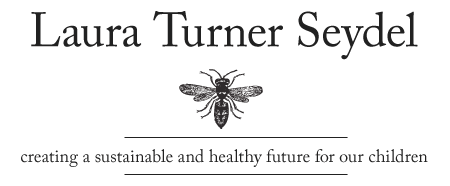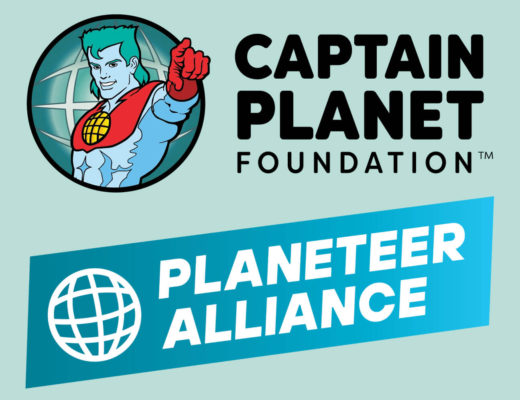When I was working in the apparel business, we used to have four main collections a year: winter, spring, summer and fall. Today, with “fast fashion,” clothing production has increased to produce cheaper clothes 52 weeks a year. The apparel industry is now the second-most polluting industry after big oil. People love to shop, and clothing is becoming cheaper than ever. But buying fast fashion comes at a high cost for labor conditions and practices in developing countries; it’s also destroying the environment.

With fast fashion, companies can get feedback from trends in the industry and turn around production and delivery of clothes in five weeks. But cheap clothes depend on cheap labor, including that of children – and often unsafe and deplorable working and living conditions. One of the many disastrous events the industry has taken criticism over was a Bangladesh factory collapse that killed over 1,100 clothing workers. Almost one in six people in the world work in the apparel industry, and most are working for less than minimum wage in their countries.
The other main problem with fast fashion is the toll on the environment. The apparel industry causes 10 percent of carbon emissions around the world, and dangerous dyes and chemicals are getting into our waterways. Another problem is cheap clothing has become “disposable” and is filling up our landfills. Think about these numbers:
1) Each year, 150 billion garments are produced. That’s more than 20 garments per person for every person on Earth.
2) The amount of clothing each person owns in the U.S. has increased 60 percent from 2000 to 2014.
3) Five percent of all landfill space is textile waste; 75 percent of our clothes end up in the landfills.
4) The average U.S. citizen throws out 70 pounds of clothes per year.
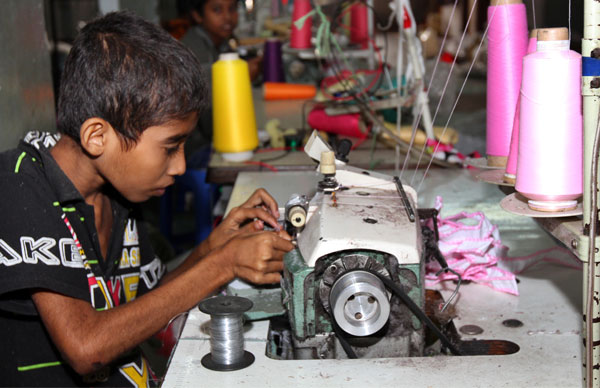
What is happening in the industry?
Given the history and prevalence of waste within the industry, major organizations have become compelled to change the face of fashion while maintaining its quality and appeal. Through collaboration with powerhouses such as the Sustainable Apparel Coalition and the Apparel Impact Institute (a conglomeration of fashion stakeholders, labels and manufacturers), organizations have implemented changes that will help reduce some of consumers’ greatest concerns regarding wasted materials and resources. Established fashion labels that produce the following items are just a few examples of those who are attempting to revamp their stamp on the environment.
OUTERWEAR
My absolute favorite outdoor gear is Patagonia. It’s super practical, performs well and looks great. And I am proud to wear their clothes because they support most of the environmental groups that I have been associated with, including Captain Planet Foundation and Chattahoochee Riverkeeper. Patagonia will repair any clothing that doesn’t hold up. If it can’t be fixed, they recycle it. In 2016, the company donated all their Black Friday sales ($10 million) to environmental groups, and they continue to donate 1 percent of all sales to nonprofit environmental groups as a member of 1% for the Planet. That’s added up to $74 million in cash donations given directly to thousands of organizations working in local communities around the world.
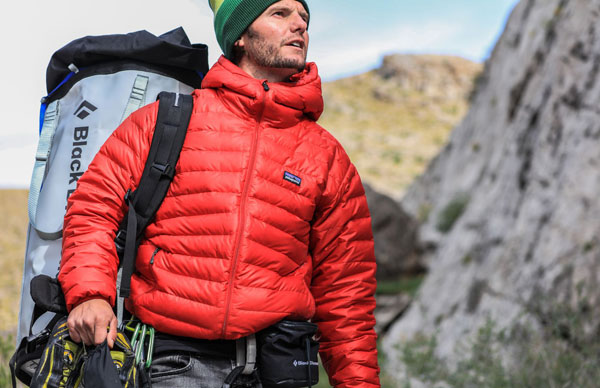
LUXURY DESIGNERS
Companies like Kering, which owns luxury labels Yves Saint Laurent and Gucci, support the idea of closed-loop sourcing, according to a recent Newsweek report. There would be essentially no waste, because textiles would simply be looped between factories, retailers, our closets, thrift shops, textile recycling facilities and then back to factories. Stella McCartney, who used to be part of Kering and now has full ownership of her brand, was one of the first designers to set some good environmental standards using numerous eco-friendly materials, including recycled polyester, organic cotton and regenerated cashmere. They have waste-reduction strategies in place across their entire supply chain, and they measure and report on their direct and indirect greenhouse gas emissions.
LUXURY RETAILERS
Even high-end retailers such as Tiffany & Co. are continually striving to achieve greater sustainability. Of the raw precious materials obtained by their internal manufacturing locations, 98 percent can be directly traced to a mine or recycler. Eighty-four percent of their international global electricity is sourced from renewable energy. Additionally, 98 percent of their international manufacturing employees are hired from the local community, and the company contributes more than $40 million to the local economy through buying and processing of goods and services. Cartier, another major luxury brand, is one of the founders of the Responsible Jewelry Council; its members ensure full regulation and control of mines where gems and metals are sourced, that the surrounding community is paid fair wages and is protected by high environmental and safety standards, and that the land and water around the mines are toxin-free and damaged trees are reforested.
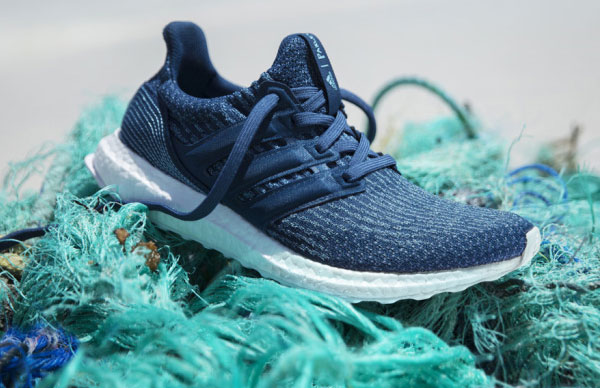
SHOES
Companies like Rothy’s and Adidas have found a treasure trove of reusable material: plastic. Rothy’s utilizes a special yarn, created through a process of heating recycled plastic (sourced from all over the world) into long fibers, to produce the upper components of its footwear. Adidas x Parley is a joint venture that uses plastic found on beaches and coasts prior to it reaching the ocean. The company purports that each pair of shoes keeps 11 plastic bottles from getting into the ocean. It hopes to sell 11 million pairs this year, according to a Huffington Post article. On World Water Day, Sperry launched a new line of shoes made from plastic ocean debris, which mostly consists of discarded fishing nets.
DENIM
The Gap has made various promises to support sustainability, including sustainable sourcing of 100 percent of their cotton by the year 2021 through a partnership with the Better Cotton Initiative. Additionally, through their Washwell program, they guarantee a process that uses 20 percent less water than traditional washing methods to produce their denim. Levi’s has implemented an Authorized Vintage line for which they source and resell vintage jeans and jackets that were created at least 30 years ago. With a supply of nearly 550,000 units of vintage denim, they use a vendor to revitalize and wash the product and then repurpose the pieces to meet contemporary standards.
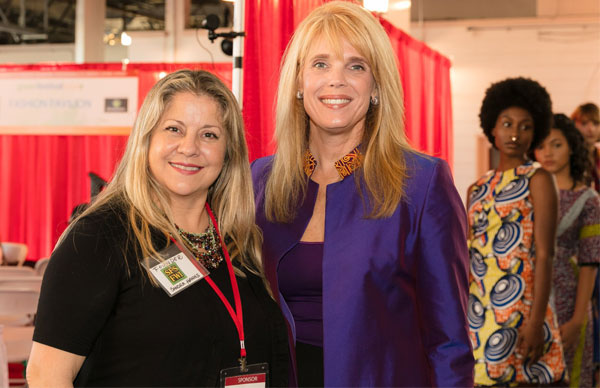
GOING FORWARD
While some of our favorite fashion labels become more progressive, we can also look forward to advances in technology and advice from pioneers of sustainability to ease our decision-making in creating a sustainable wardrobe. Provenance, a company that provides an online sourcing tool to sustainable organizations, encourages consumer due diligence by providing greater transparency into the journey of clothing. Not only does the site provide a search tool for consumers to select product categories and the causes that mean the most to them (such as social impact or animal welfare), it also contains an analysis tool for businesses to determine if they meet the threshold for transparency in their operations.
The fashion journey of internet bloggers like Tania Arrayales provide us with a blueprint for sustainable fashion. After years of succumbing to the trends of fast fashion, Arrayales eventually abstained from buying new clothing for a year. “The more I thought about that impact of my fast fashion addiction, both on the people who make our clothes and the environment, the more I started to examine other parts of my life,” she said in a HuffPost article. Like Arrayales, millennials and the younger generation are increasingly interested in secondhand clothing; this is a blow to the fast-fashion industry and a push to organizations with sustainability initiatives to strive harder toward their eco-friendly goals.
A NEW PERSPECTIVE
Now that spring has sprung, let’s revisit our closets. For many of us, the new season means that reorganizing our closets and getting rid of clothing is on the horizon. We now have many viable, simple options: donating clothing to organizations like Goodwill or the Salvation Army; selling clothing to secondhand shops or online via sites like Poshmark, TheRealReal or eBay; or renting clothes from services like Rent the Runway. I also recommend that everyone watch the documentary “The True Cost” to learn more about the negative impact of fast fashion. Ultimately, with all of these resources, from retailers to bloggers to style moguls who really want to make a difference, we can approach our wardrobes and the somewhat daunting task of spring cleaning with a new perspective – and an eco-friendly mentality.
